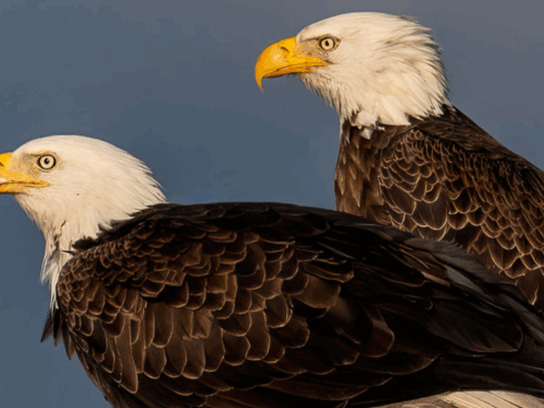
The recovery efforts to save the bald eagle population in the Chesapeake Bay have met remarkable success. Today the Bay claims one of the largest populations of the bird in the United States, according to the state Department of Natural Resources (DNR).
Only Alaska has more.
According to annual surveys, there were only 62 breeding pairs in Maryland in 1985. By 2004, there were 390 breeding pairs, an increase large enough for the DNR to declare bald eagle recovery had surpassed its goals.
Now, the Maryland Bird Conservation Partnership estimates there are over 1,400 breeding pairs in the state.
Eagles Comeback
Bald eagles had fallen to near-extinction levels throughout the country due to pesticides, habitat loss and illegal shooting.
Thanks to the banning of the pesticide DDT, the bald eagle continues to make a comeback.
“Bald eagles are a very good example of what happens when you find the solutions and take action, and now you can look at how they’ve come back,” said Dave Brinker, a DNR conservation ecologist.
Gwen Brewer, a DNR science program manager, said the recovery of the iconic bird of prey is a testament to changes people were willing to make across broad sectors of society.
“To recover a species that is so widely distributed and that declined to such a serious level—that is something to celebrate,” Brewer said.
How It Happened
Aside from pesticide restrictions, actions to restore the Chesapeake Bay and protect nest sites helped the eagles in Maryland, according to the DNR. The Chesapeake Bay Protection Act of 1984 established protections for “critical areas” within 1,000 feet of tidal waters. This safeguarded bald eagle nest sites from development and disturbances.
Bald eagles now nest in every county in Maryland and in Baltimore City. Nationally, bald eagles had been reclassified as “threatened” rather than “endangered” in 1995, and they were delisted in 2007.
“Through the year, we have three pretty unique populations of bald eagles,” Brinker said. “There are local birds that are here all year long. Then southern breeding eagles disperse to the Chesapeake Bay to spend summer here because food resources are so good. And in the winter, northern populations that need a warmer place, they come down to the Chesapeake Bay.”
Photo by Bill Mish


Comments are closed.